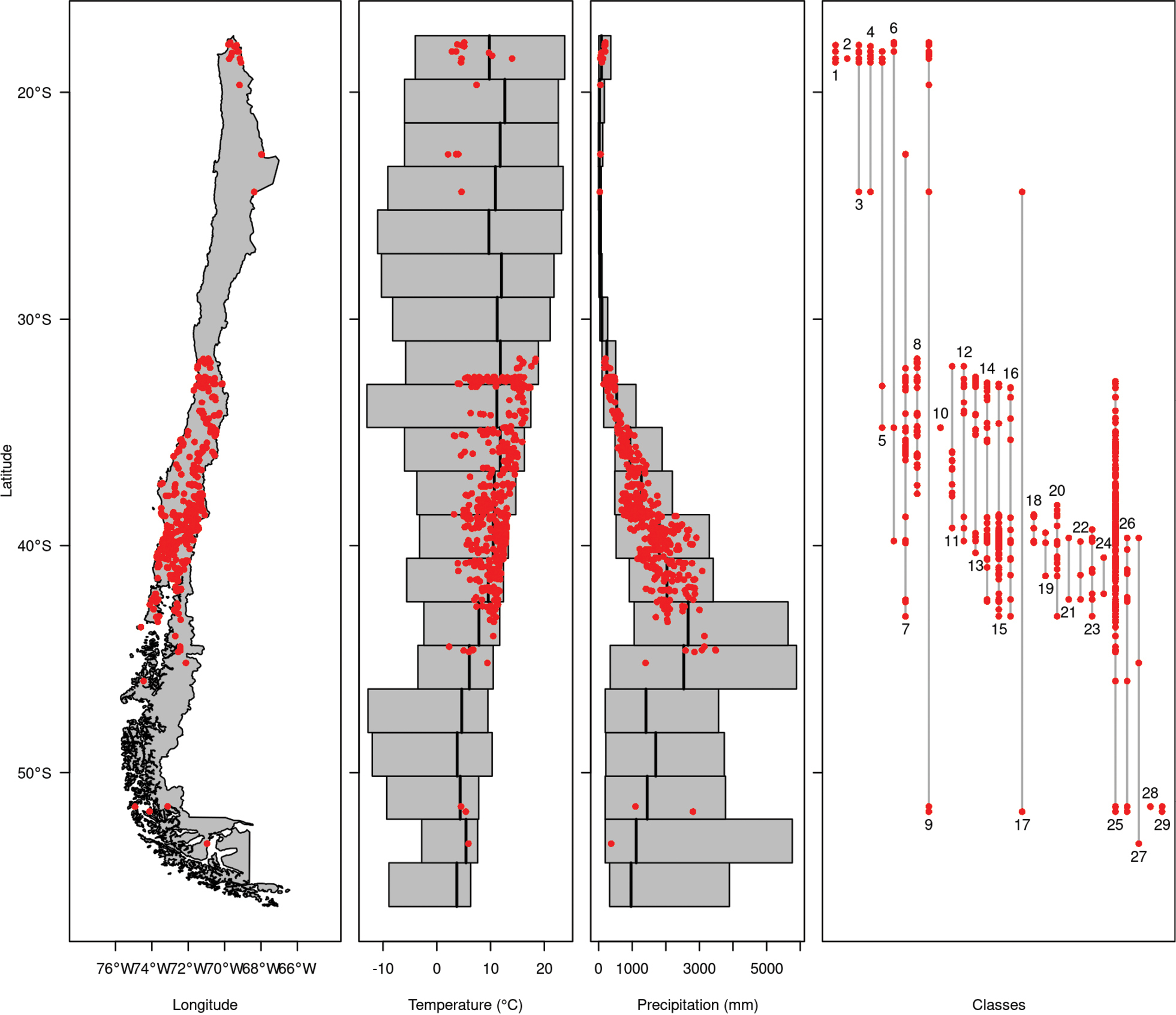
|
||
|
Latitudinal distribution of recorded phytosociological classes. In all panels the positions of vegetation plots are overlaid as red dots. The bars of the two middle panels correspond to mean annual temperature and total annual precipitation values extracted from CHELSA version 1.2 (Karger et al. 2017) for all pixels included in the respective latitudinal segments. The right panel shows the latitudinal distribution of recorded plot observations for each class. All observations belonging to the same class are connected by a vertical line. Classes are numbered by their latitudinal distribution: 1 - Polylepidetea tarapacano-besseri, 2 - Parastrephio lepidophyllae-Fabianetea densae, 3 - Anthochloo lepidulae-Dielsiochloetea floribundae, 4 - Plantagini rigidae-Distichietea muscoidis, 5 - Opuntietea sphaericae, 6 - Lemnetea minoris, 7 - Ambrosietea chamissonis, 8 - Gutierrezio paniculatae-Trichoceretea chilensis, 9 - Ephedro chilensis-Chuquiragetea oppositifoliae, 10 - Mayteno boariae-Salicetea humboldtianae, 11 - Helianthemetea guttati, 12 - Tessario integrifoliae-Baccharidetea salicifoliae, 13 - Lithraeo causticae-Cryptocaryetea albae, 14 - Stellarietea mediae, 15 - Molinio caerulae-Arrhenatheretea elatioris, 16 - Plantaginetea majoris, 17 - Phragmito-Magnocaricetea, 18 - Potametea, 19 - Littorelletea australis, 20 - Bidentetea tripartiti, 21 - Senecionetea chilensis, 22 - Loasetea, 23 - Nanojuncetea australis, 24 - Empetro rubrum-Pernettyetea, 25 - Wintero-Nothofagetea, 26 - Nothofagetea pumilionis-antarcticae, 27 - Myrteolo nummulariae-Sphagnetea magellanici, 28 - Rostkovietea magellanicae, and 29 - Deschampsio-Asteretea vahlii. |